Cohesion Policy beyond 2020
Resources from Cohesion Policy will continue to be targeted at EU regions most lagging behind in development. At the same time, Cohesion Policy will continue to be a strong link between the EU and EU regions and cities.
One of the main features of the modernised Cohesion Policy is the focus on key investment priorities, where the EU is best placed to deliver. The new Cohesion Policy will focus its resources on five policy objectives which will drive EU investments in 2021-2027:
- a Smarter Europe, through innovation, digitisation, economic transformation and support to small and medium-sized businesses;
- a Greener, carbon free Europe, implementing the Paris Agreement and investing in energy transition, renewables and the fight against climate change;
- a more Connected Europe, with strategic transport and digital networks;
- a more Social Europe, delivering on the European Pillar of Social Rights and supporting quality employment, education, skills, social inclusion and equal access to healthcare;
- a Europe closer to citizens, by supporting locally-led development strategies and sustainable urban development across the EU.
EU legislative package – adopted regulations
EU legislative package – legislative proposals
A STRENGTHENED LINK WITH THE EUROPEAN SEMESTER
The European Semester provides a framework for the coordination of economic policies across the EU helping member states align their budgetary and economic policies with the objectives and rules agreed at the EU level. It allows member states to discuss their plans for budget, macroeconomic and structural reforms and monitor progress at specific times throughout the year. Thus, member states design their multiannual investment strategies which help them streamline the use of EU funds to support the implementation of key reforms agreed with the Commission in line with a carefully planned investment roadmap and to maximise the added value of EU funding. In the next funding period, the Commission proposes to strengthen the link between EU funding and the European Semester, meaning that member states will have to duly take on board the country-specific recommendations formulated and endorsed in the context of the European Semester while preparing their future programmes.
SIMPLIFYING MANAGEMENT AND CONTROL
The Commission proposes less complex and more aligned implementation rules for the next period. Thus, one set of rules will cover seven EU funds implemented in partnership with Member States ('’shared management'’ – proposed also for the new Just Transition Fund), which will make life easier for programme managers. A single set of rules also ensures there will be less red tape and lighter control procedures for businesses and entrepreneurs benefiting from EU support. The Commission proposes 80 simplification measures, including simpler audit requirements and fewer burdens for programmes with good track record and proper functioning of the management and control systems.
The new framework also combines the stability necessary for long-term investment planning with the right level of flexibility in order to cope with unforeseen events. A mid-term review will determine if changes in the programmes are needed for the last two years of the funding period based on emerging priorities, programme performance and most recent country-specific recommendations. Within certain limits, transfers of resources will be possible within EU funds programmes without the need for a formal Commission approval. As a general rule, Member States may decide to make a voluntary contribution of up to 5% of each Fund to new "InvestEU" instrument. Slovenia’s contribution to the fund will be made in order to pursue Cohesion objectives through projects implemented in Slovenia.
More about simplification measures
MORE OPPORTUNITIES FOR SYNERGIES
Revised rules for the period 2021-2027 will facilitate synergies and seek complementarities between the funds covered by a single rulebook and with other EU instruments with which they will share objectives in the areas of innovation, climate change, growth and job creation.
Strategic planning process will be undertaken to identify common objectives and common areas of intervention of different programmes and to facilitate the integration of measures supported by Cohesion funding and other instruments in accordance with a single set of rules. Outside of the single rulebook, synergies will be made easier with other EU instruments, like Horizon Europe (Horizon 2020), LIFE, Erasmus+ and Common Agricultural Policy (CAP).
With a simpler framework for 2021-2027 Cohesion Policy in the form of a single set of rules covering seven funds, life will be made easier for programme managers and beneficiaries. This will also facilitate synergies, for example between the ERDF and the European Social Fund+ in the context of integrated city development plans, for the regeneration of deprived urban areas. Also, the Asylum and Migration Fund, together with Cohesion Policy funds, will be able to finance local integration strategies for migrants and asylum seekers. These rules will make it easier to use a combination of funding sources and instruments within a single project.
Merging the current European Social Fund (ESF), the Youth Employment Initiative (YEI), the Fund for European Aid to the Most Deprived (FEAD), the Employment and Social Innovation Programme (EaSI) and the EU Health Programme, the new ESF+ will be the main EU financial instrument to invest in people and a key vector to strengthen social cohesion, improve social fairness and increase competitiveness across Europe. ESF+ programmes will focus on recommendations and country analysis provided under the European Semester of policy coordination, and they will be geared towards making the principles of the European Pillar of Social Rights a reality on the ground.
For more about the European Pillar of Social Rights which seeks to deliver new and more effective rights for citizens and builds on 20 key principles, please visit the European Commission website
The Commission proposes a Cohesion Policy for all regions and a more tailored approach to regional development, strongly supporting balanced regional development. 2021-2027 Cohesion Policy will support the development of local development strategies and integrated territorial development programmes by urban, local or other territorial authorities tailoring its interventions to regional and local needs and targeting resources where they are most needed.
Interregional and cross-border cooperation will be facilitated by the new possibility for a region to use part of its own allocation to fund projects anywhere in Europe jointly with other regions. The new generation of interregional and cross-border cooperation (Interreg) programmes will help Member States overcome cross-border obstacles and develop joint services. The Commission proposes a new instrument for border regions and Member States eager to harmonise their legal frameworks, the European Cross-Border Mechanism.
Building on a successful pilot action from 2014-2020, the Commission proposes to create the Interregional Innovative Investments totalling around EUR 900 million to develop European value chains across Europe. Regions with matching smart specialisation assets (incorporation of IPA/ENI programmes foreseen) will be given more support to build pan-European clusters in priority sectors such as big data, circular economy, advanced manufacturing or cybersecurity.
COHESION POLICY 2021-2027 IN SLOVENIA
The new Cohesion Policy framework continues investing in all regions and keeps the three different categories of regions, i.e.:
- less developed regions (GDP per capita up to 75% of the EU average),
- transition regions (GDP per capita varies between 75% and 100% of the EU average),
- more developed regions (GDP per capita exceeds 100% of the EU average).
Slovenia is divided in two cohesion regions, i.e. Zahodna Slovenija (western Slovenia) and Vzhodna Slovenija (eastern Slovenia). GDP per capita expressed in purchasing power parity (PPP) in 2019 stood at 89% of the EU average or two percentage points above the 2018 figure. According to the data released by Eurostat, Zahodna Slovenija achieved 106% of the EU average, whereas Vzhodna Slovenija managed to reach 73% of the EU average.
The Commission used the 2018 GDP per capita at PPS figures on which it built its allocation method for the programming period 2021-2027. Slovenia’s GDP per capita in purchasing power standards (PPS) in 2018 stood at 87% of the EU average. The gap between the average level of development of the two cohesion regions even increased in 2018, with Zahodna Slovenija recording 105% of the EU average and Vzhodna Slovenija standing at 73% of the EU average according to the Eurostat data.
EUROPEAN COUNCIL CONCLUSIONS
The Commission's initial proposal from February 2020 foresaw significantly lower co-financing rates for EU regions at different levels of development compared to the co-financing rates agreed at the European Council on 21 July 2020.
|
|
February 2020 |
July 2020 |
|
Less developed regions |
75% |
85% |
|
Transition regions (2021-2020 less developed regions) |
65% |
70% |
|
Transition regions |
55% |
60% |
|
Developed regions |
40% |
40% |
|
Cohesion Fund |
75% |
85% |
|
Interreg |
70% |
80% |
|
|
N+2 |
N+3 |
Slovenia stroke a good deal in the negotiation on the EU's next long-term budget which closed on 21 July 2020. The country will remain a net recipient of EU funds. According to estimates, the Cohesion Policy envelope for Slovenia is to stand at a total of EUR 2.9 billion in the programming period 2021-2027, coupled with EUR 1.5 billion under Common Agricultural Policy and a further EUR 100 million from the Just Transition Fund.
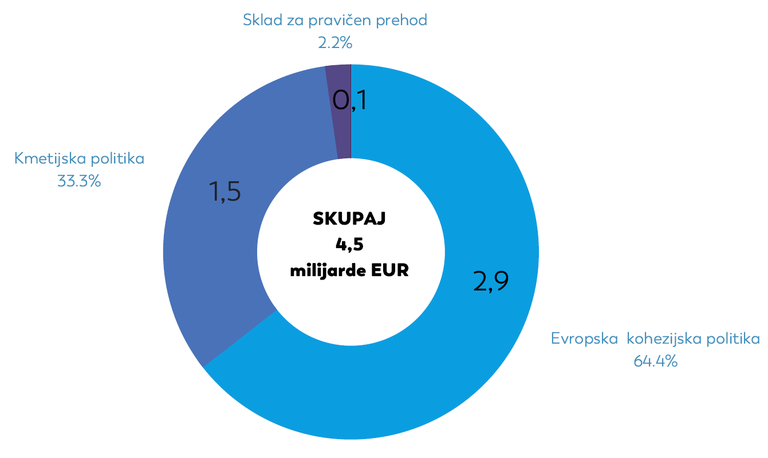
CURRENT STATE OF PLAY
EU leaders agreed the EU’s long-term budget for the period 2021-2027 (EUR 1.074 billion) and the new recovery instrument NextGenerationEU (EUR 750 million) on 21 July 2020. EU Council thus supported the initiative of the Commission that proposed grants and loans under the NextGenerationEU instrument to help Member States recover from the Covid-19 crisis, to repair the economic and social damage caused by the crisis across the EU, to boost EU economy and to preserve and create jobs in EU member states and regions.
Multiannual financial framework 2021 - 2027
INFOGRAPHIC - EU BUDGET 2021-2027 AND RECOVERY PLAN
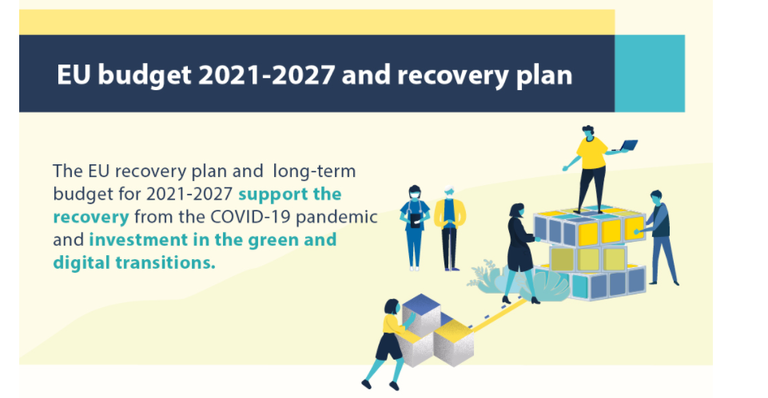
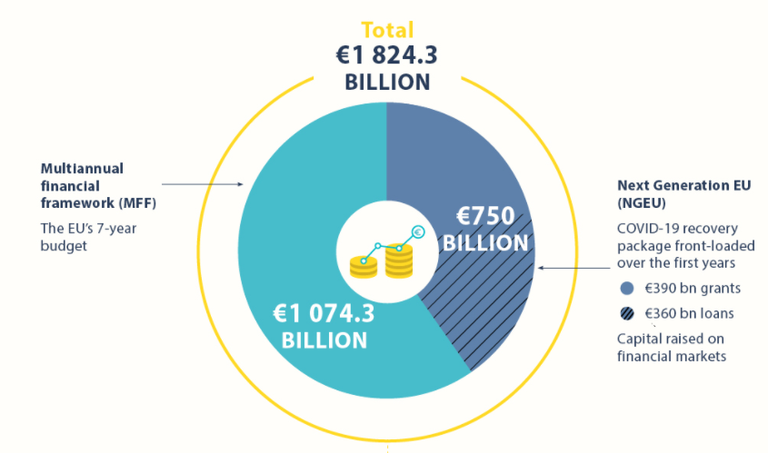
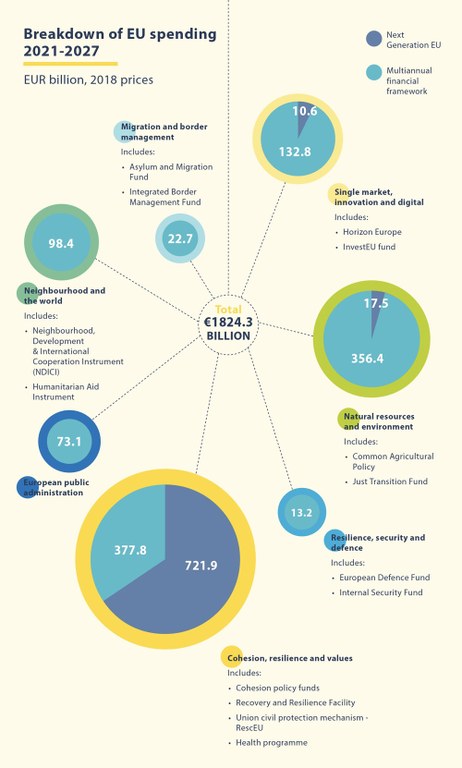
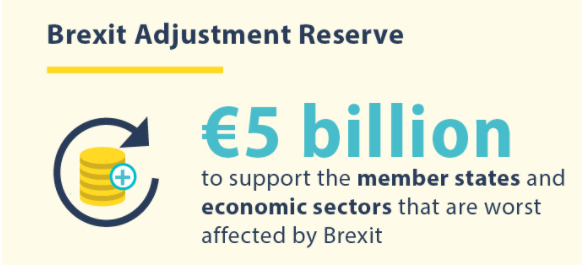
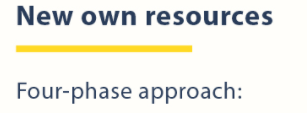
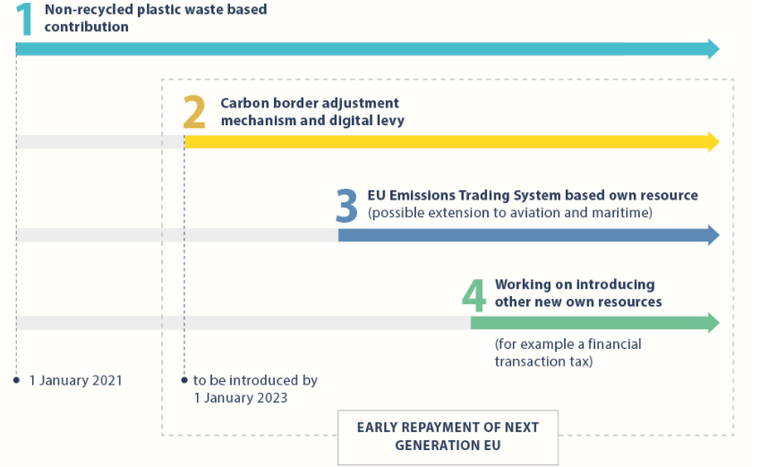

Stay up to date with the latest news on post-2020 Cohesion Policy by visiting Commission websites for regional development and social affairs and the website of the European Parliament.







